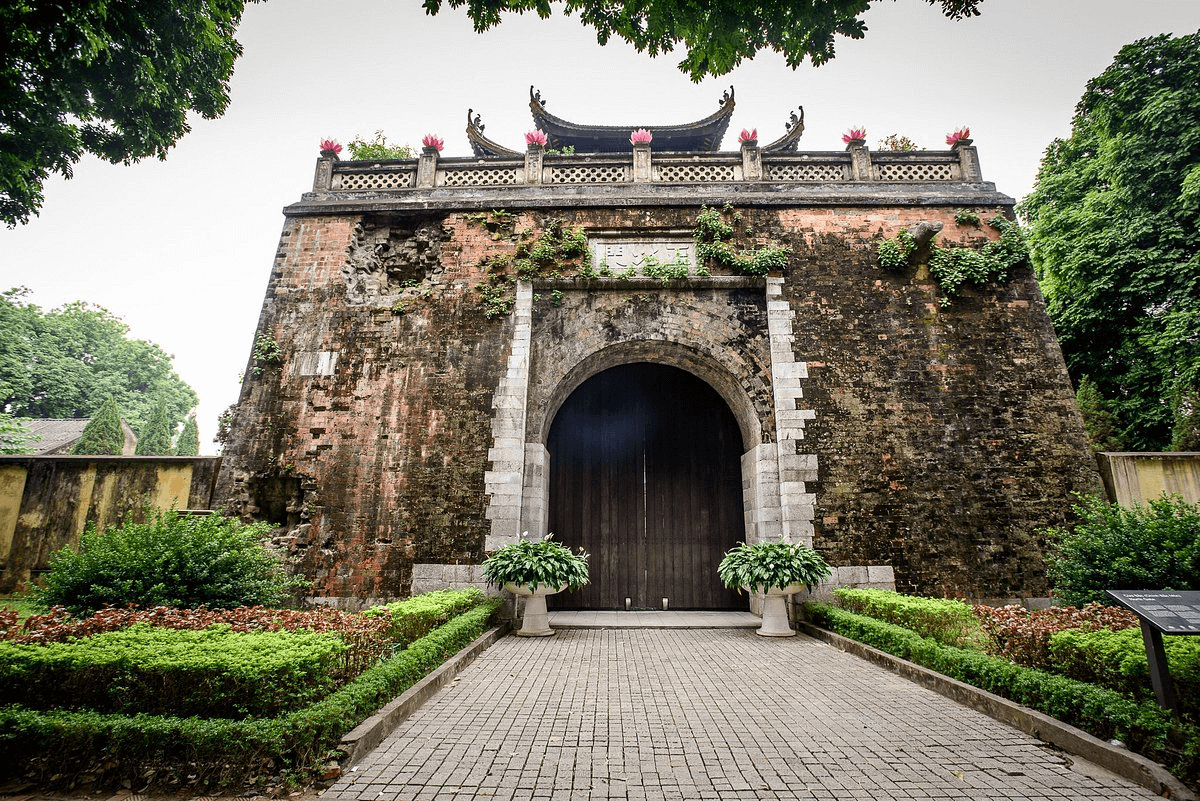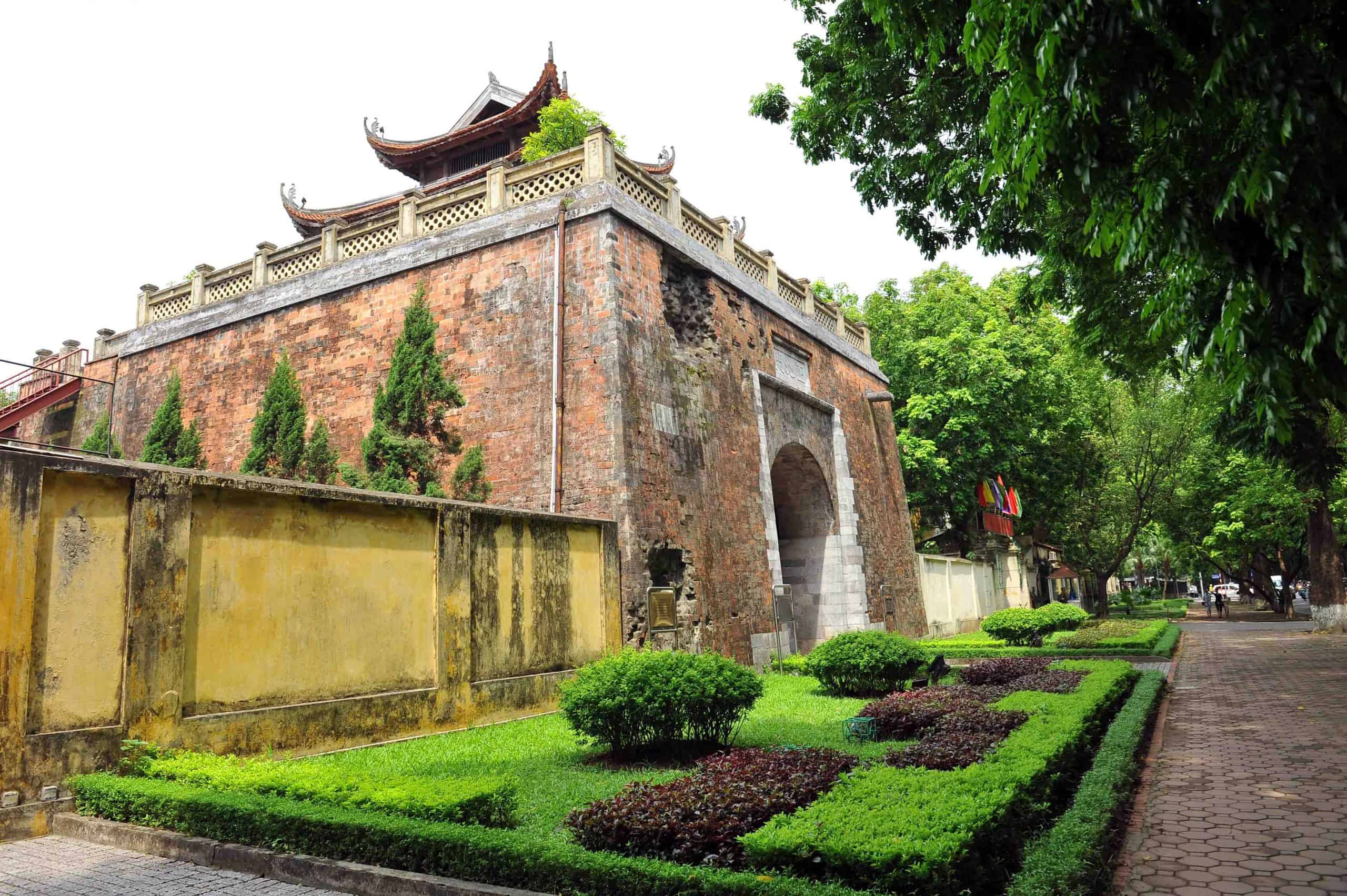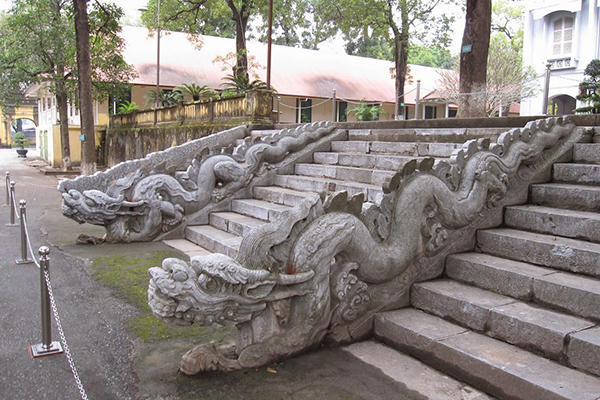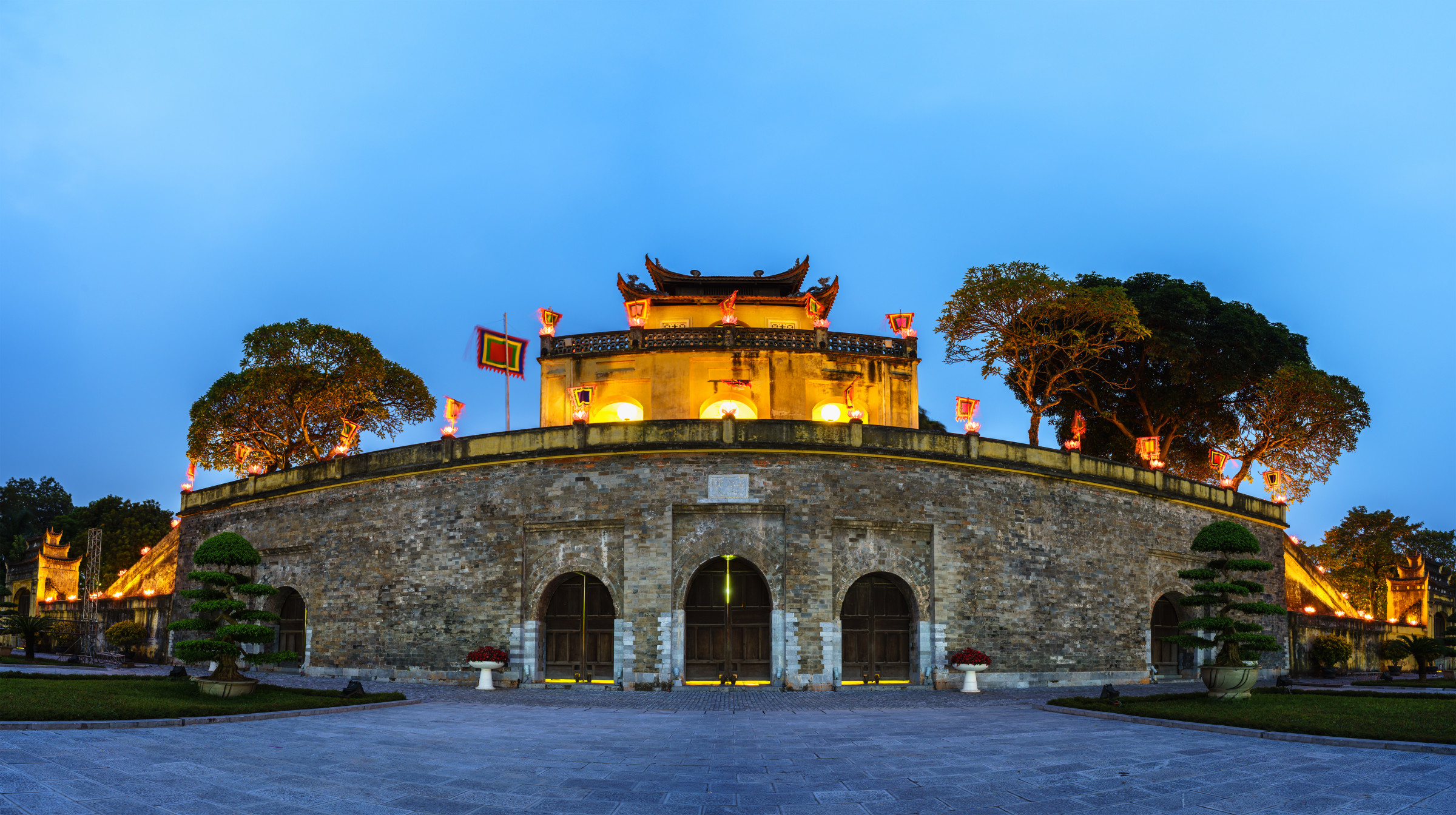Dragons & Emperors: Secrets of the Thang Long Citadel

Introduction to Dragons & Emperors: Secrets of the Thang Long Citadel
Dragons & Emperors: Secrets of the Thang Long Citadel is an immersive exhibition that takes visitors through the rich history and cultural significance of the Thang Long Citadel in Hanoi, Vietnam. The exhibition explores the ancient capital's legends, traditions, and architectural wonders through artefacts, interactive displays, and multimedia presentations.
Visitors will have the chance to discover the mysteries behind the citadel's construction, its role as the seat of power for many dynasties, and the legends associated with its iconic dragon emblem. The exhibition aims to promote an understanding and appreciation of Vietnam's history and heritage, giving visitors a deeper appreciation for the significance of the Thang Long Citadel in shaping the country's identity.
Significance and historical background of the Thang Long Citadel
The Thang Long Citadel holds immense historical and cultural significance in Vietnam. Built in the 11th century, it served as the Vietnamese kings' political centre and imperial residence for over 700 years. The citadel witnessed the rise and fall of many dynasties, shaping Vietnam's political landscape and cultural identity.
The citadel's architectural design reflects a harmonious blend of Chinese, Vietnamese, and French influences, showcasing the country's cultural diversity. The most iconic feature of the Thang Long Citadel is its dragon emblem, which represents power, strength, and good luck in Vietnamese culture.
The site was recognized as a UNESCO World Heritage Site in 2010, elevating its importance on a global scale. It is now open to the public, attracting both locals and tourists from around the world.
Comparing the Thang Long Citadel to other historical sites:
| Thang Long Citadel | Forbidden City | Angkor Wat |
|---|---|---|
| Location | Hanoi, Vietnam | Cambodia |
| Period of Existence | 11th - 20th century | 15th - 20th century |
| Size | 18 hectares | 72 hectares |
| Cultural Significance | Vietnamese royalty and dynasties | Chinese imperial palace |
| Architectural Style | Vietnamese, Chinese, French | Chinese |
Dragons & Emperors: Secrets of the Thang Long Citadel offers visitors an engaging and educational experience to learn about the history and cultural significance of the Thang Long Citadel. With its rich architectural heritage and legends, the citadel represents Vietnam's past and its enduring cultural identity. The exhibition provides a unique opportunity to delve into the secrets and stories of this iconic site, making it a must-visit attraction in Hanoi.

History of the Thang Long Citadel
The founding of the Thang Long Citadel by Emperor Ly Thai To
The Thang Long Citadel has a fascinating history dating back to the 11th century. Emperor Ly Thai To founded it, the first monarch of the Ly Dynasty. With its strategic location, he chose Hanoi, Vietnam, as the site for the citadel. This marked the beginning of a new era in Vietnamese history.
Expansion and development under subsequent dynasties
Over the centuries, the Thang Long Citadel witnessed the rise and fall of many dynasties, each leaving its mark on its architecture and cultural landscape. Under the Le Dynasty, the citadel underwent significant expansion, adding additional palaces and administrative buildings. The citadel flourished under subsequent dynasties, serving as the political centre and the residence of Vietnamese kings.
Comparing the Thang Long Citadel to other historical sites:
| Thang Long Citadel | Forbidden City | Angkor Wat |
|---|---|---|
| Location | Hanoi, Vietnam | Cambodia |
| Period of Existence | 11th - 20th century | 15th - 20th century |
| Size | 18 hectares | 72 hectares |
| Cultural Significance | Vietnamese royalty and dynasties | Chinese imperial palace |
| Architectural Style | Vietnamese, Chinese, French | Chinese |
The Thang Long Citadel is a unique historical site that offers visitors a glimpse into Vietnam's rich past. With its diverse architectural influences, it reflects the cultural diversity of the country. The citadel's dragon emblem, representing power and good luck, adds to its allure.
The Thang Long Citadel is a must-visit attraction in Hanoi. Its immersive exhibition, Dragons & Emperors: Secrets of the Thang Long Citadel, provides a captivating journey through Vietnamese history and culture. Whether you're a local or a tourist worldwide, this exhibition offers a fascinating experience that deepens your understanding and appreciation of Vietnam's past. Come and discover the mysteries and stories behind this iconic site.

Architecture and Design of the Thang Long Citadel
Distinctive architectural features of the Thang Long Citadel
The Thang Long Citadel is renowned for its unique and distinctive architectural features. The citadel is a blend of different styles, reflecting the influences of Vietnamese, Chinese, and French architectural traditions. Some of the notable features include:
- High walls and sturdy gates: The citadel is surrounded by high walls made of brick and stone, providing protection and security to the royal residence and administrative buildings.
- Palaces and ceremonial halls: Within the citadel are imposing palaces and grand ceremonial halls used for official functions and important events.
- Dragon decorations: Dragons hold significant symbolism in Vietnamese culture, and the Thang Long Citadel is adorned with dragon motifs throughout its architecture, symbolizing power and good luck.
- Imperial Gardens: The citadel includes lush gardens and landscaped areas, providing a serene atmosphere in the heart of the bustling city.
The role of feng shui in the design and layout
Feng shui, the ancient Chinese practice of harmonizing human dwellings with the natural environment, played a crucial role in the design and layout of the Thang Long Citadel. The choice of location, layout of buildings, and orientation were all carefully considered to create a harmonious and balanced environment. Some key elements influenced by feng shui include:
- Direction: The citadel was aligned with the cardinal directions, particularly emphasizing the east-west axis, which is believed to bring good luck and prosperity.
- Water features: The citadel was strategically positioned near natural bodies of water, such as the Red River, to enhance positive energy flow and promote abundance.
- Mountains and hills: The presence of nearby mountains and hills was essential to provide protection and stability, creating a favourable environment for the royal residence.
Incorporating feng shui principles in the design and layout of the Thang Long Citadel demonstrates the importance placed on balance, harmony, and auspiciousness in Vietnamese culture.
With its distinctive architecture and feng shui-inspired design, the Thang Long Citadel stands as a testament to Vietnam's rich history and cultural heritage. Whether you're a history enthusiast or simply fascinated by architectural marvels, a visit to the Thang Long Citadel will leave you in awe of its grandeur and significance.

Discoveries and Excavations at the Thang Long Citadel
Recent archaeological excavations and findings
In recent years, archaeological excavations at the Thang Long Citadel have unearthed fascinating discoveries that shed light on the historical significance of this ancient site. Excavations have been carried out by a team of dedicated researchers, archaeologists, and historians eager to uncover the secrets of the citadel's past.
Among the remarkable findings are artefacts dating back centuries, including pottery, coins, and tools that provide valuable insights into the daily lives and activities of the people who inhabited the citadel. These artefacts have been meticulously preserved and displayed, allowing visitors to appreciate the craftsmanship and ingenuity of the ancient Vietnamese civilization.
Revealing the secrets and hidden treasures of the Thang Long Citadel
Through extensive excavations, researchers have uncovered hidden treasures within the Thang Long Citadel. These treasures include ornate jewellery, royal insignia, and precious relics that reflect the opulence and grandeur of the ruling dynasties.
The discoveries have provided a glimpse into the extravagant lifestyles of the past and helped piece together the historical narrative of Vietnam. Each artefact tells a story, adding to our understanding of the citadel's social, political, and cultural aspects.
The Thang Long Citadel has truly become a treasure trove of history, offering visitors a unique opportunity to experience the rich tapestry of Vietnam's heritage. The artefacts that have been unearthed speak volumes about the diverse influences that have shaped Vietnamese culture over the centuries.
As ongoing excavations reveal new insights into the Thang Long Citadel, there is no doubt that this ancient site will continue to captivate and inspire future generations. The preservation and study of these archaeological treasures ensure that the legacy of the Thang Long Citadel lives on, connecting the past with the present and preserving the history of Vietnam for all to appreciate.
A visit to the Thang Long Citadel allows you to immerse yourself in history, witness the wonders of ancient architecture, and gain a deeper understanding of Vietnam's cultural heritage. Whether you're a history enthusiast or simply curious about the past, a trip to this magnificent citadel is a journey of discovery.

Royal Life at the Thang Long Citadel
The daily life and activities of emperors and their families
In addition to the fascinating discoveries and excavations, the Thang Long Citadel offers insights into the daily life of the emperors and their families. As you explore the ancient site, you can imagine the grandeur and splendour that once filled these walls.
-
Opulent Living Quarters: The emperors resided in luxurious palaces within the citadel. These palaces featured intricate architectural designs, with beautiful gardens and lavish furnishings.
-
Cultural Pursuits: Emperors and their families were known for patronising the arts. They cultivated an appreciation for literature, poetry, music, and dance. The Thang Long Citadel was a hub of intellectual and artistic activities, hosting performances and gatherings.
-
Courtly Etiquette: Court life was governed by strict protocols and etiquette. Elaborate ceremonies and rituals emphasised the emperor's status and power. These rituals were carried out with precision and elegance.
Court rituals and ceremonies held within the Citadel
The Thang Long Citadel was a residence and the centre of political and cultural activities. It witnessed numerous court rituals and ceremonies showcasing the ruling dynasties' power and majesty.
-
Coronation Ceremonies: The citadel hosted the grand coronation ceremonies of emperors, where they were officially crowned. These ceremonies were extravagant affairs involving a procession and various rituals.
-
Inauguration Ceremonies and Festivals: The Thang Long Citadel was the site of important inauguration ceremonies and festive celebrations. These events marked the inauguration of a new reign and were attended by the royal court and the general public.
-
Religious Ceremonies: The citadel was also a place of worship, with temples and shrines dedicated to various deities. Religious ceremonies were held regularly, paying homage to the gods and seeking their protection for the empire.
The Thang Long Citadel offers a window into the vibrant royal life of Vietnam's past. Through meticulous archaeological research and excavations, we can now glimpse the opulence, cultural pursuits, and courtly rituals that defined the emperors and their families' existence.

Defence and Military Strategy of the Thang Long Citadel
The defensive structures and systems of the Citadel
When you step into the Thang Long Citadel, you not only get a glimpse into the royal life but also witness the impressive defence mechanisms that were put in place. The emperors were keen on protecting their fortress, and the citadel was fortified with robust defensive structures.
- Fortified Walls: The Thang Long Citadel was surrounded by high and thick walls built to secure the imperial capital. These walls were a physical barrier, protecting the emperors and their families from external threats.
- Watchtowers: Strategically placed watchtowers dotted the perimeter of the citadel. These watchtowers gave guards a clear view of the surrounding areas, helping them detect any potential intruders or approaching enemies.
- Moats and Waterways: The citadel was also fortified by moats and waterways. These water barriers provided an additional layer of defence, making it difficult for invaders to breach the citadel's walls.
Strategic positioning and military importance
The Thang Long Citadel's location and layout were crucial to its military strategy and defensive capabilities. It was strategically positioned to exploit its natural surroundings and enhance its defence.
- Elevated Terrain: The citadel was situated on elevated terrain, providing a vantage point and making it easier for the guards to spot approaching armies or suspicious activities.
- Surrounded by Rivers: The citadel was surrounded by rivers, which acted as natural barriers and made it difficult for enemies to launch direct attacks. The rivers acted as a line of defence, giving the imperial capital an added layer of protection.
- Strategic City Placement: Thang Long, the capital city, was strategically located in northern Vietnam. This placement allowed the citadel to control important trade routes and defend against potential invasions from northern adversaries.
With its elaborate defensive structures and strategic positioning, the Thang Long Citadel was a formidable fortress. It not only served as the centre of royal life and culture but also stood as a symbol of power and military might. Exploring this ancient site gives you a deeper appreciation of the military strategies employed by the emperors of Vietnam's past.
.

Cultural Heritage and Preservation Efforts
UNESCO World Heritage recognition and preservation measures
When you step into the Thang Long Citadel, you get a glimpse into the royal life and military strategies and bear witness to its rich cultural heritage. Recognizing this ancient citadel's historical and cultural significance, the Thang Long Citadel was designated as a UNESCO World Heritage site in 2010.
The UNESCO World Heritage recognition not only highlights the importance of the Thang Long Citadel but also brings attention to the need for its preservation. Various preservation measures have been implemented to ensure this cultural treasure's longevity.
One of the key preservation efforts is the restoration and conservation of the citadel's physical structures. Experts have meticulously restored fortified walls, watchtowers, moats, and other defensive features to their former glory. This restoration process involves using traditional building techniques and materials to maintain the site's authenticity.
In addition to physical restoration, ongoing research and archaeological excavations are conducted to enhance our understanding of the citadel's history and architecture. These excavations unearth artefacts and relics and provide valuable insights into the daily lives of the emperors and their subjects.
Efforts to conserve and restore the Thang Long Citadel
Preserving the Thang Long Citadel goes beyond the physical restoration of its structures. Efforts are also made to promote awareness and education about its cultural significance. Visitor centres and exhibitions have been set up to educate visitors about the citadel's history, art, and architecture.
Collaboration between local authorities, UNESCO, and international partners has also been instrumental in preserving the Thang Long Citadel. This collaboration ensures the implementation of comprehensive preservation strategies and the sharing best practices in heritage conservation.
Furthermore, tourism management plays a vital role in preserving the citadel. Sustainable tourism practices, such as limiting the number of visitors per day and implementing strict regulations to prevent damage to the site, are encouraged. This approach ensures that future generations can continue to learn from and appreciate the cultural heritage of the Thang Long Citadel.
The recognition of the Thang Long Citadel as a UNESCO World Heritage site and the preservation efforts undertaken demonstrate the commitment to safeguarding and promoting Vietnam's rich cultural heritage. By visiting this historic site, you contribute to its preservation and gain a deeper understanding of the country's history and cultural identity.

Visit the Thang Long Citadel Today
Tourist attractions and highlights within the Citadel
As you explore the Thang Long Citadel, you'll discover many attractions that offer insight into Vietnam's fascinating history and culture. Here are some highlights you shouldn't miss:
- The Central Sector: This area houses the main complex of the citadel, including the Forbidden City, the Hanoi Flag Tower, and the D67 Tunnel. Immerse yourself in the grandeur of the ancient royal court as you walk through the restored buildings and courtyards.
- The Archaeological Site: Visit the excavation area where ongoing research and discoveries are being made. Marvel at the artefacts and remains that have been unearthed, shedding light on the daily lives of the emperors and their subjects.
- The Exhibition Halls: Step inside the visitor centres and exhibition halls to deepen your understanding of the Thang Long Citadel's history, art, and architecture. Learn about the various preservation efforts and the significance of this UNESCO World Heritage site.
- The Traditional Music Performances: Enjoy traditional Vietnamese performances in the citadel. Immerse yourself in the enchanting melodies and rhythms passed down through generations.
Visitor information, opening hours, and ticket prices
If you're planning to visit the Thang Long Citadel, here's some essential information to help you make the most of your trip:
| Opening Hours: | 8:00 AM - 5:00 PM (Closed on Mondays) |
|---|---|
| Ticket Prices: | Adults: $5 Children (ages 6-15): $2 Children (under 6): Free |
| Guided Tours: | Guided tours are available at an additional fee. These tours offer in-depth insights into the citadel's history and significance. It is recommended to book in advance to secure your spot. |
| Getting There: | The Thang Long Citadel is located in the heart of Hanoi, making it easily accessible by public transport or taxi. There is also ample parking available for those travelling by car. |
| Visitor Facilities: | The site provides visitor facilities such as restrooms, shops selling souvenirs, and a café where you can relax and savour traditional Vietnamese drinks and snacks. |
Embark on a journey through time and discover the captivating history and cultural heritage of the Thang Long Citadel. By visiting this remarkable site, you'll contribute to its preservation and gain a deeper appreciation for Vietnam's rich history and vibrant traditions.
